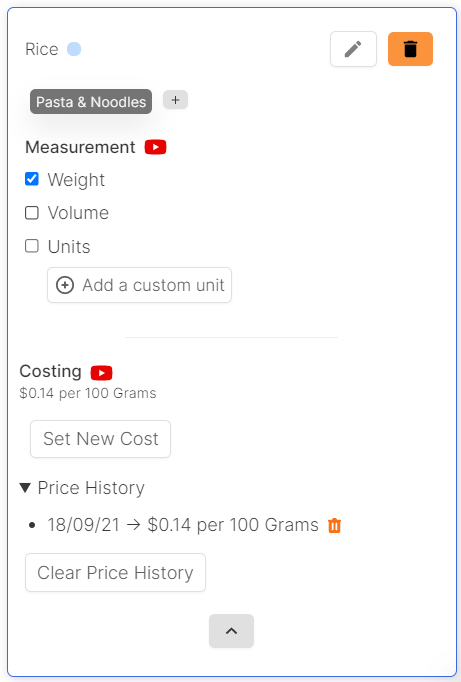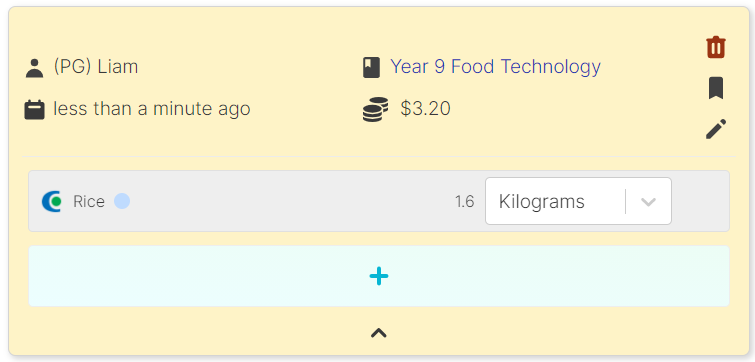Ingredient Costing
What is Ingredient Costing?
Ingredient Costing is a feature in Project Groceries that allows you to add accurate prices to a Ingredients. This can be done in two ways: Manual Costing and Automatic Costing.
Manual Costing
Costing an Ingredient Manually means that you will need to enter in the price per quantity in manually. Because the information is entered in manually, it won't be updated unless you decide to do so enter in a new cost.
This is useful when you need to cost Ingredients from websites/stores that aren't currently supported in Project Groceries or when you are Costing Ingredients bought locally, without an online presence.

Pictured: An Ingredient, "Rice", Costed Manually
Automatic Costing
Automatic Costing of an Ingredient is as easy as copying and pasting the URL for the ingredient into Project Groceries. If the website is supported, then the program will fetch the relevant information (picture and price per quantity). You will then have an Ingredient Costed through that link, meaning that you will have up to date pricing at the click of a button.

Pictured: An Ingredient, "Rice", Automatically Costed
Costing Across Measurement Types
Costing an Ingredient only needs to be done with one price per quantity (such as: $0.20 per 100 Grams). Project Groceries will use that price per quantity to automatically calculate for any Measurement Types and quantities and give an accurate Cost for what you need.

Pictured: 1.6kg of Rice ordered at $0.20 per 100 grams = $3.20
Uses for Costing Ingredients
Costing is important because it allows you to start budgeting. This helps with giving a good estimate of how much; a Recipe, Order, and Shopping List would cost.
Adding the Cost for an Ingredient means that you will be able to get a good estimate for cost of a Recipe with as many servings as is set, and an accurate price per serving.
This translates to the Summary Page and Shopping List as well, as when the Orders are collated in the Summary Page, so are the costs for all of the Costed Ingredients. Giving a good estimate for what you can expect the shopping list to cost, which can then be printed out or saved as a file to keep as a record for budgeting purposes.
